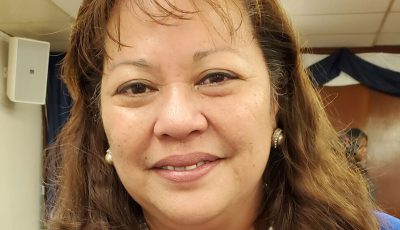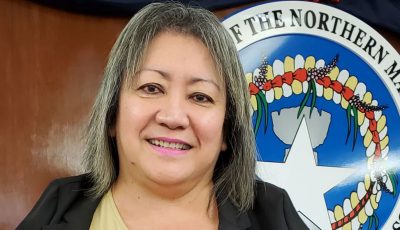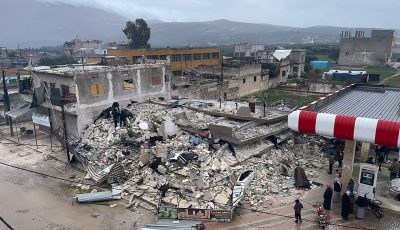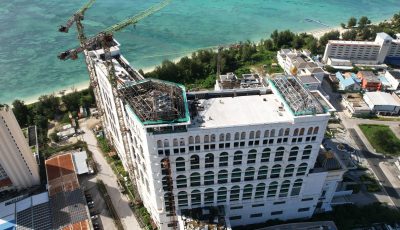Expert: Chamorros originated from Southeast Asia

National Geographic Scientific Data Manager Dr. Miguel G. Vilar, PhD, explains to the crowd results of his research on the origin of the Chamorro people in last Saturday’s presentation organized by the Northern Marianas Humanities Council at the Fiesta Hall of the Grandvrio Resort. (Jon Perez)
Vilar, National Geographic Society’s project manager for the Genographic project, was on Saipan for a one-night lecture on “Researching the Origins and Genetic Distinctiveness of the Chamorros: A Bi-Parental Analyses.”
The former University of Pennsylvania post-doctoral research fellow based his analyses after getting DNA samples from 122 Chamorros from Guam, Rota, and Saipan in 2013. His study showed that the Chamorro people’s origins could be traced to Indonesia and the Philippines.
Results reveal that 92 percent of Chamorros belong to haplogroup E, which is found in both Southeast Asian countries but is rare in Oceania. A haplogroup is a genetic population of a group of people who share a common ancestor on the paternal or maternal lineages.
Vilar, who is tracing the connection of the Chamorro people to modern day Indonesia and the Philippines, told Saipan Tribune that this could be part of the Austronesian migration and expansion that occurred thousands of years ago.
“It was really fascinating to learn that these people were expert seafarers. They managed to find the [Marianas] islands just by looking at the stars, studying wind conditions and direction of the waves,” said Vilar. “It was a great feat and they truly are amazing people who discovered the small islands here in Micronesia.”
“We have to dig deeper on this and break down the components to understand more. We need to do more research and work on this,” said Vilar after his almost two-hour lecture that was presented by the Northern Marianas Humanities Council and attended by close to 100 people.
Filipino DNA further surfaced with the Philippines and the Marianas—Guam and the CNMI—being under Spanish colonial rule for hundreds of years. The Mariana Islands is the usual stop of Spanish Galleons going back to Spain by way of Mexico.
He said that in Guam alone five of the participants in 2013 showed they had Philippine lineage.
“This is mainly because of colonization. Filipino men integrated with Chamorro women.”
Vilar said that bones and other sources of DNA should be preserved especially in tropical islands where heat is one factor that destroys remains of people.
“As technology in identifying and tracing DNA further advances we need to preserve remains of ancient people. We don’t want to lose these evidences because of outside forces.”



























